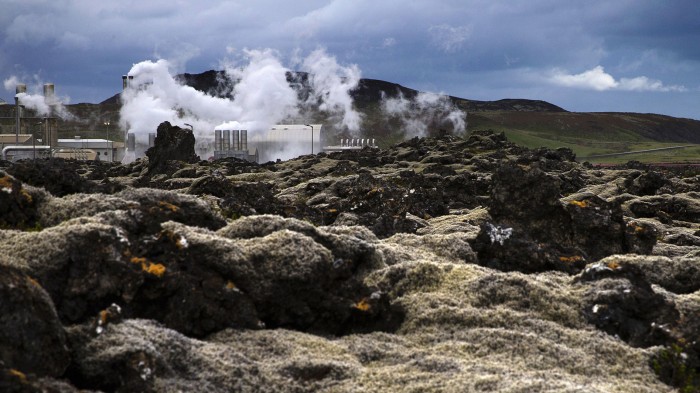To Tap Earth’s Energy, Drill the World’s Hottest Hole
If you want to generate power by tapping the heat from beneath our feet, what better way than to drill an outrageously deep hole into a volcano?
That’s what’s currently happening in Iceland. The BBC reports that the Iceland Deep Drilling Project is currently 4.5 kilometers into drilling what will become a five-kilometer borehole by the end of the year. The hope: to hit a deep well of hot rock and water that, at up to 500 °C, produces supercritical steam.
Most geothermal boreholes bottom out around three kilometers deep. But if the team can successfully tap deeper, hotter parts of the planet, it claims it could create up to 10 times as much energy as a standard geothermal installation. Still, it remains unclear how much power this particular borehole might create, as the project is very much an experiment.

Other nations will be watching with interest. Plans are bubbling up in the U.K. to tap into Iceland’s geothermal energy production by borrowing excess electricity from the volcanic nation via an underground cable.
It could soon have enough to spare. Iceland is, understandably given its geological situation, a keen advocate of geothermal power, and currently generates at least 25 percent of its electricity that way. A new set of supercritical plants could cause its generation capacity to quickly jump.
Meanwhile, other nations are looking to further embrace the heat of the planet, too. Japan is currently embarking on a bid to build the world's largest geothermal power station in the Indonesian province of North Sumatra. And Kenya is increasingly going underground for power, by tapping an estimated 1,000-megawatt source of heat outside Nairobi.
But none of those projects is as tantalizing as the five-kilometer borehole. While there’s only another 500 meters to go, there’s still the very real possibility of hitting a magma well whose contents rush to the surface. But if it can avoid that fate, it could bring forth steam—and with it, plenteous power.
(Read more: BBC, CNN, Bloomberg, Nikkei, “A Power Plant in Iceland Deals with Carbon Dioxide by Turning It into Rock”)
Keep Reading
Most Popular
Large language models can do jaw-dropping things. But nobody knows exactly why.
And that's a problem. Figuring it out is one of the biggest scientific puzzles of our time and a crucial step towards controlling more powerful future models.
The problem with plug-in hybrids? Their drivers.
Plug-in hybrids are often sold as a transition to EVs, but new data from Europe shows we’re still underestimating the emissions they produce.
Google DeepMind’s new generative model makes Super Mario–like games from scratch
Genie learns how to control games by watching hours and hours of video. It could help train next-gen robots too.
How scientists traced a mysterious covid case back to six toilets
When wastewater surveillance turns into a hunt for a single infected individual, the ethics get tricky.
Stay connected
Get the latest updates from
MIT Technology Review
Discover special offers, top stories, upcoming events, and more.